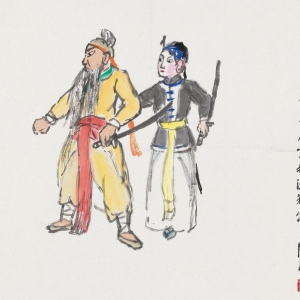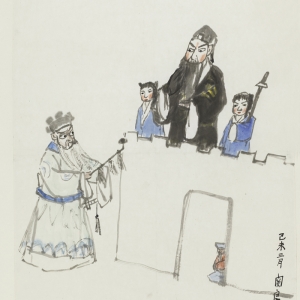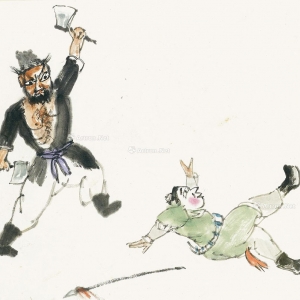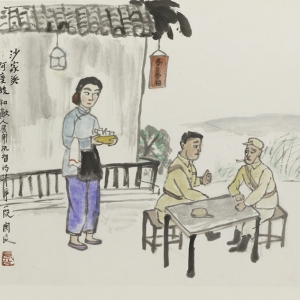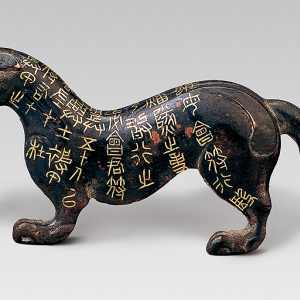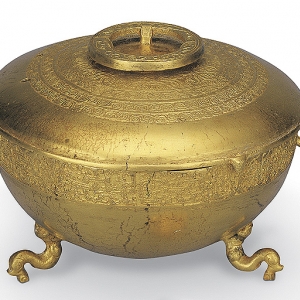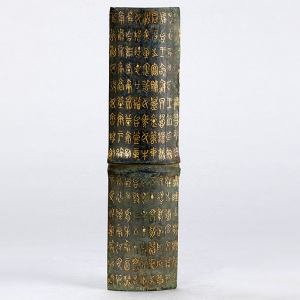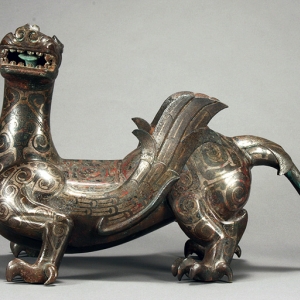国内
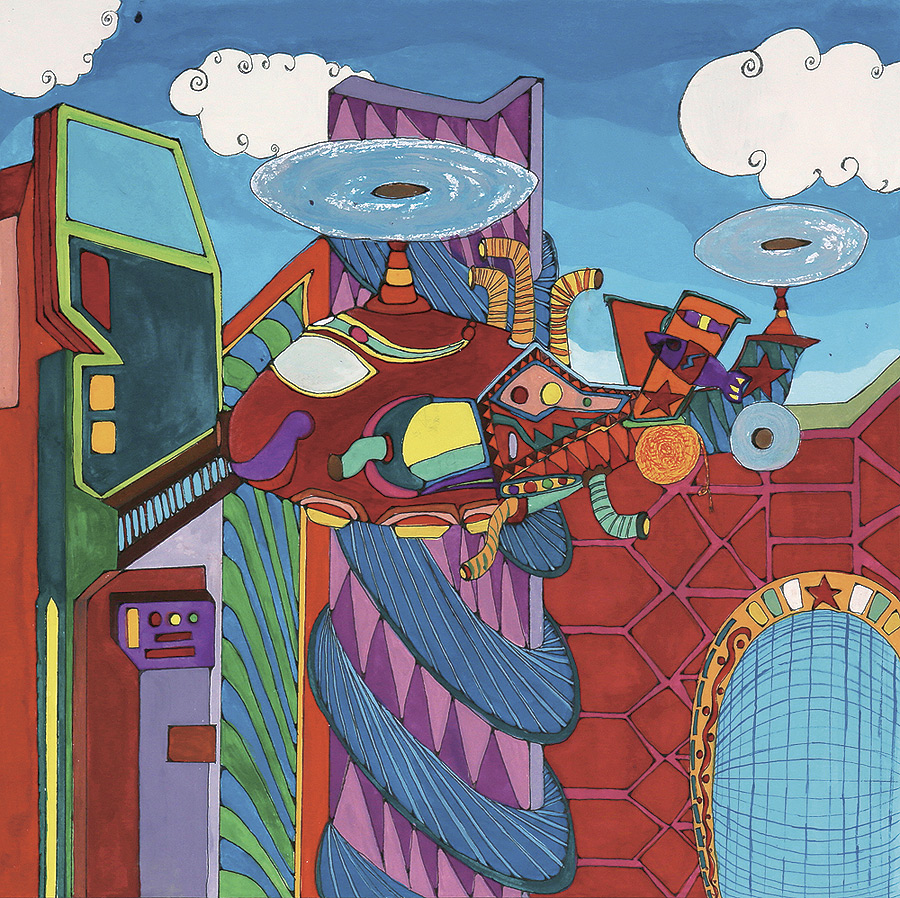
展览介绍
“My Future My Will”: International Children’s Paintings Exhibition
After birth, children begin to explore and try to understand the world by placing the “self” at the foundation of perception. At first, they cannot draw the boundary between themselves and the world. Then gradually, they learn to observe and describe the world from the perspective of “me”. Even if they can’t express themselves in words clearly, they will draw things whenever they pick up pens. During their growth, they learn to draw objects by using signs and express their feelings with brushes. They represent the real “self” by painting in their own way as kids.
Children’s paintings are amazing. When talking about the primitive paintings created by primitive humans such as those vivid frescos and exquisite pottery paintings, people can’t help making a reference to children’s paintings. It is also impossible not to mention the influence of children’s paintings to the modern paintings created in the prosperous period of civilization. These three types of paintings represent the world with abstract signs, portray objects in a plain artistic language and show the inner emotions with bright colors. Picasso once said, “It took me four years to paint like Raphael, but a lifetime to paint like a child.” This master of modern art understood the essence of painting: to “observe” like a child since a child would draw things directly from what he/she sees. Thus, children’s paintings are extremely natural.
Therefore, we stage this exhibition of children’s paintings with great awe. This exhibition, beginning with “me” and reappearing frequently throughout, demonstrates the spontaneous expression of many children as they use the brush to represent the world through their eyes.
This exhibition is dedicated to children who are the future of mankind and to every adult who is willing to understand children.

展品欣赏
- 《“未来之眼”心灵之眼》沈夕雅--少儿组--北京

- 《未来我来》冯米若-少儿组--美国
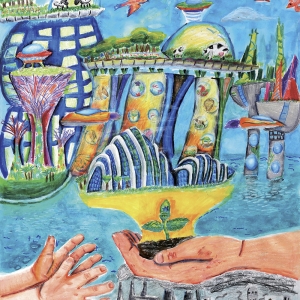
- 陈启泽-美国-幼儿组

- 王卓雅-深圳-少儿组

- 《猫咪的城市》-王晴-幼儿组-广东佛山

- 《天空之城》-简嘉惠辰-幼儿组-上海
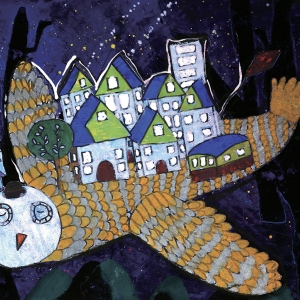
- 《未来建设家》-王家成-幼儿组-深圳
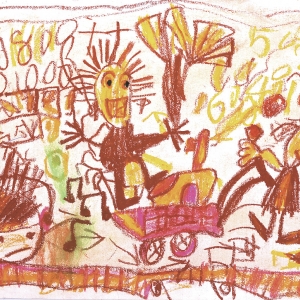
- 《下雨啦》-王炳众-少儿组-湖南长沙
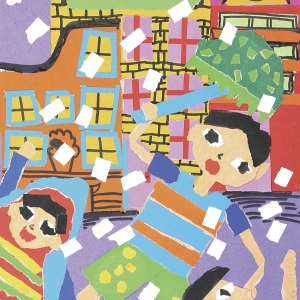
- 李胤龙-广州-少年组
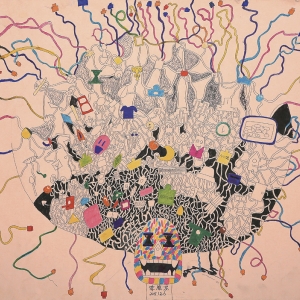
- 《围城》-邓楠-少年组-广东惠州
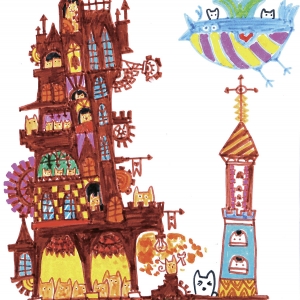
- 《未来的美丽世界》-陈岱徽-少儿组-广州
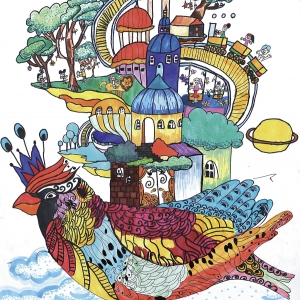
- 《未来我来》-罗奕彤-幼儿组-上海查看更多
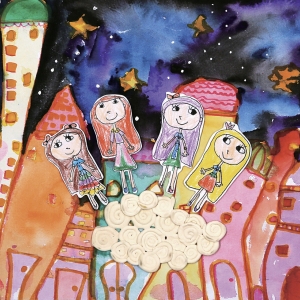

展览介绍
「僕の未来、僕が決める」国際子供絵画特別展
子供は生まれる始めから、自己を中心として、世界を探求し、世界を認知する。初めに、自分と世界の違いがわからないげと、徐々に、「私」の視覚から世界を観察する、見直す、描く。言語を自由に表現できない彼らは、ペンを手にすると、あちこち落書きします。そのあと、彼らは記号を使って物を表現し、ペンを使って感じだことと自分の喜怒哀楽を描きます。子供たちは真の自分が絵を通して表現します。
子供達の絵は本当に素晴らしいものです。人類の児童時代作った絵と言えば、生き生き岩壁の絵と美しい陶器上の絵よく児童画を参考物として話に出てきます。文明時代にはいり、現代の美術を話に出て来るとしても、児童画の影響がわすれわけではいきません。三者とも記号を世界を表現し、芸術的な言語を物ことを描き、情熱的な色が気持ちを表現します。ぺカソはこのように言っていました「10代のとき私の絵を描く様子は古代大師のようになっていました。でもわたしは生涯にかけて子供のように絵を描くこどが学んでいます。」ぺカソは絵を描く真実を理解してます。子供のような目で観察し、子供の目に何にを見れば、何にを描く。だからこそ、子供達の作品は自然に、情熱的です。
私たちは敬意を持って今回の子供絵画特別展示会を企画しました。私たちの展示が「私」を始め、どこでも「私」の存在を感じます。それは、たくさん幼い心が世界をふれあい、手がペンを取るときの本音です。
この特別展は人類の未来に当たる子供達と子供たちを読み解きたい大人たちに捧ぎます。

展品欣赏
- 《“未来之眼”心灵之眼》沈夕雅--少儿组--北京

- 《未来我来》冯米若-少儿组--美国

- 陈启泽-美国-幼儿组

- 王卓雅-深圳-少儿组

- 《猫咪的城市》-王晴-幼儿组-广东佛山

- 《天空之城》-简嘉惠辰-幼儿组-上海

- 《未来建设家》-王家成-幼儿组-深圳

- 《下雨啦》-王炳众-少儿组-湖南长沙

- 李胤龙-广州-少年组

- 《围城》-邓楠-少年组-广东惠州

- 《未来的美丽世界》-陈岱徽-少儿组-广州

- 《未来我来》-罗奕彤-幼儿组-上海查看更多

参观指南
特別展時間:2018年5月26日―6月30日
場所:湖南省博物館特別展示庁第二ホール

展览介绍
“未来-我来”国际少儿绘画展
儿童自出生伊始,便开始以“自我”为中心,探索世界,认知世界。刚开始,他们分不清自我与世界的边界。渐渐地,才学会用“我”的视角来观察世界、审视世界、描绘世界。即使他们还无法用语言自如地表达,只要他们拿起笔来,便会肆意涂鸦。这之后,他们学会用符号来描画物体,用画笔来表达所知所感,表达喜怒哀乐。他们将自己最本真的一面,用稚拙的笔触呈现出来。
儿童绘画真的很了不起。每当人们谈起人类童年时期所创作的原始绘画,那些灵动的岩壁画,那些精美的陶器绘画,总免不了用儿童画作为参照。即使是进入繁盛文明时期所开创的现代绘画,也总要提及儿童画对它的影响。三者同为用抽象符号表征世界,用平面化的艺术语言表现物象,用肆意热烈的色彩表达内在的情绪。毕加索曾言:“我在十几岁时画画就像个古代大师,但我花了一辈子学习怎样像孩子那样画画。”这位现代艺术大师理解到了画作的真谛:用孩子般的眼睛去“观看“,孩子眼里看到什么,就是画什么,他们想当然的去“乱画”,孩子们的作品都是那般自然自在、浑然天成。
因此,我们怀着深深敬意策划了此次儿童绘画展览。我们的展览从“我”开始,且随处可见“我”的存在,它包含了许许多多幼小心灵在碰触世界、手执画笔时的本真表达。
谨以此展览献给预示着人类未来的儿童,以及每一位期待读懂儿童的成人。

展品欣赏
- 《“未来之眼”心灵之眼》沈夕雅--少儿组--北京

- 《未来我来》冯米若-少儿组--美国

- 陈启泽-美国-幼儿组

- 王卓雅-深圳-少儿组

- 《猫咪的城市》-王晴-幼儿组-广东佛山

- 《天空之城》-简嘉惠辰-幼儿组-上海

- 《未来建设家》-王家成-幼儿组-深圳

- 《下雨啦》-王炳众-少儿组-湖南长沙

- 李胤龙-广州-少年组

- 《围城》-邓楠-少年组-广东惠州

- 《未来的美丽世界》-陈岱徽-少儿组-广州

- 《未来我来》-罗奕彤-幼儿组-上海查看更多

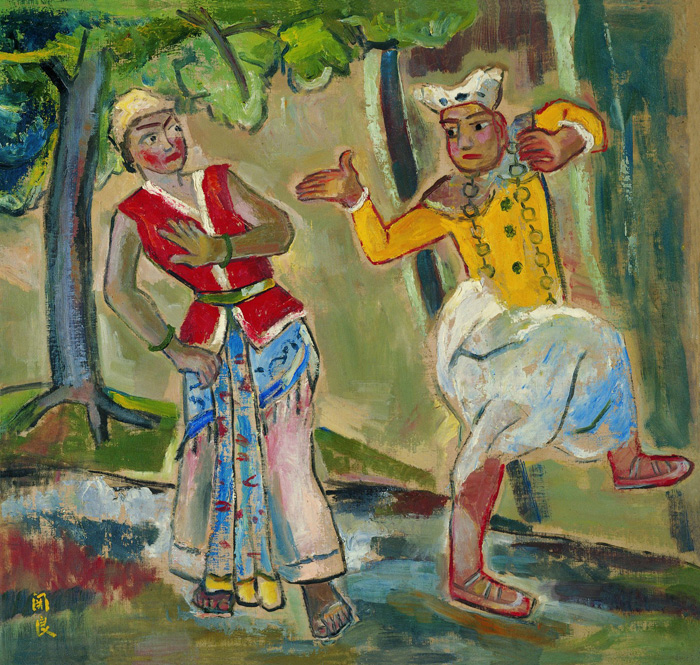
展览介绍
Paintings by Guan Liang-Exhibition Commemorating Guan Liang’s 115th Anniversary of his Birth
Exhibition Commemorating Guan Liang’s 115th Anniversary of his BirthGuan Liang, impressing people with his exquisite, childlike innocent and ingenuous Chinese opera figures paintings, is famous for his unique style. The exhibition presents some of his typical works featuring Chinese characteristics, such as The Monkey King Subdues the Skeleton Demon (A classic story from Journey to the West), The Drunken Beauty (A concubine in the Tang dynasty who was drunken) and A series of Peking Opera Figures, which has drawed wide public attention.
As one of the most adventurous and innovative Chinese artists in 20th century, Guan Liang has made remarkable contributions to the development and demonstration of Chinese traditional paintings. Perfectly combining Chinese and Western painting techniques, he integrated the painting techniques of modern and contemporary artists including Matisse, Van Gogh and Gauguin, with thick and light shades of ink, uncomplicated lines and singular Chinese aesthetics, shaping distinctive style in his paintings.
Featuring concise, unsophisticated and appealing stokes, his vivid and lifelike works were created in way of exaggeration and deformation, unrestrained to the dissection, perspective and proportion of the subject. Those characters in his works appeared to be innocent and interesting, highlighted by the depiction of eyes which are lively conveyed by dotting thick ink as the pupils.
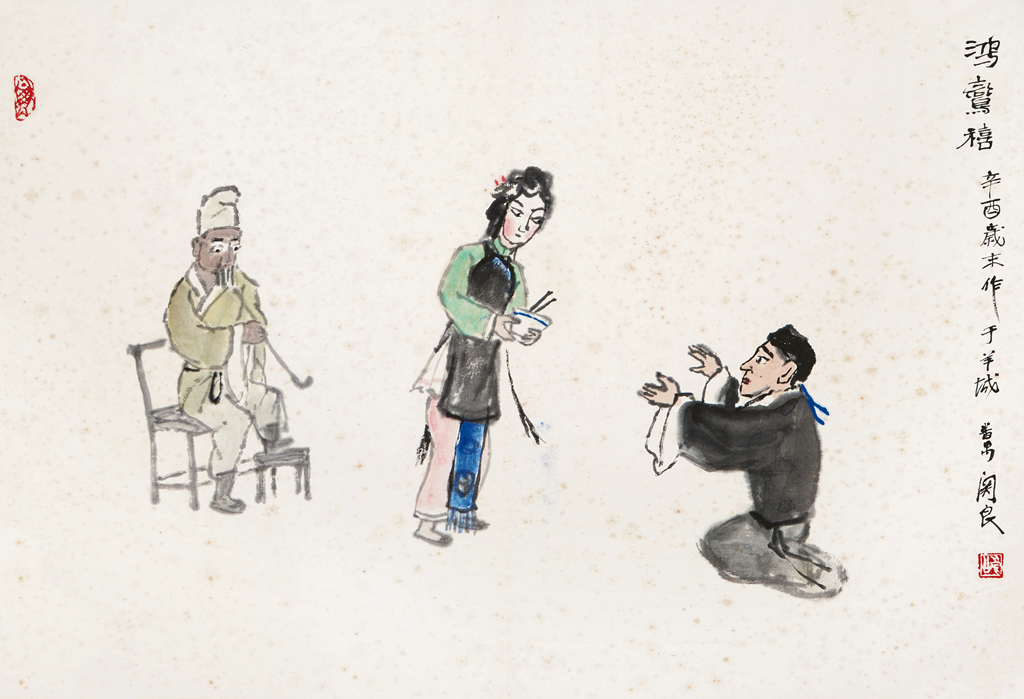
展品欣赏
艺术家介绍
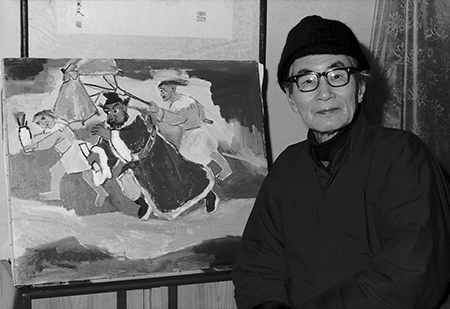
Born in Fanyu, Guangdong Province, Guan Liang, whose pseudonym was Liang Gong, went to Japan for study in 1917. He entered Kawabata Institute and then Pacific Art School for further education, during which he dedicated himself completely to the works of modern and contemporary European artists including Monet, Manet, Van Gogh, Matisse and Picasso. After returning home, Guan Liang taught in Shanghai Art College, Shanghai Art University and National College of Art in Hangzhou. Since 1949, he has served as the trustee of Chinese Artists Association, vice president of Shanghai Artists Association, a member of Shanghai Culture and History Museum, a painter and teacher in Chinese Painting Academy in Shanghai, a professor in Zhejiang Art Academy, director and adviser in Art Institute of Shanghai Jiao Tong University, as well as a committee member of Shanghai Literary Federation. Like the first batch of artists studying abroad at the early stage, Guan Liang started his learning with western paintings. He incorporated Gauguin’s exaggerated forms, Van Gogh’s large-scale contrast colors and Matisse’s uncomplicated lines into his own works, establishing a distinctive style embodying the feature of the times. Influenced by Wu Changshuo, Qi Baishi, Huang Binhong, Liu Haisu, and Pan Tianshou, and inspired by Zhu Da (whose pseudonym was Badashanren), Guan Liang brought about a unique style integrating Chinese and Western painting techniques and conveying the spirit of Chinese art, which ushered a new era of painting expression. As Cheng Shifa (a master of Chinese traditional paintings) said, Mr. Guan Liang is an indispensable master in the contemporary Chinese painting community. It is Guan Liang who introduced the painting conceptions of Western modernist into Chinese ink painting, creating an ingenious style of Chinese opera figures painting.
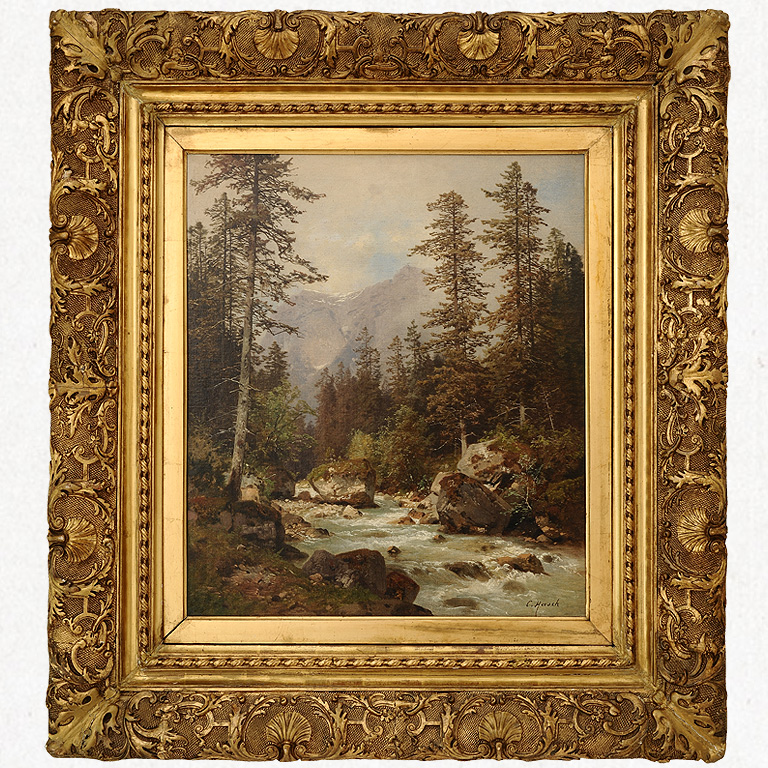
展览介绍
THE OTHER MASTERS Appreciation of the 19th Century European Classical Realistic Oil Paintings
If we look back upon the western art history, we will see that European realistic painting is its most important part. From ancient Greece to the Renaissance and to the Industrial Revolution period in the 19th century, the techniques, works and ideas of realistic painting reached its apex. Great masters of oil painting and some minor masters of such different schools and styles as pre-Raphaelitism, neo-classicism, romanticism, realism and the Barbizon School all demonstrated their outstanding artistic talents and pushed classical realistic painting to perfection.
The exhibition falls into two categories of “Portraits and Genre School Paintings” and “Landscapes and Still Lifes” according to traditional classification in western history of fine arts.Apart from consideration of historical periods and geographical locations, it also includes criteria such as the styles of the artists, the techniques employed and the feelings attached to the works. All these works are realistic ones, with the characteristics of real scenes, truthful textural expression, exquisite detail and high summary in the tableau. And these works almost cover the whole spectrum of important schools of that time: pre-Raphaelitism permeated with a strong sense of literature and narration, German romanticism with its mysticism and profundity, French neo-classicism with its modesty and elegance, realism with its praise of nature and labor, and the French Barbizon School with its sense of on-site painting from life are all presented before us.

展品欣赏
- The Poison of Love
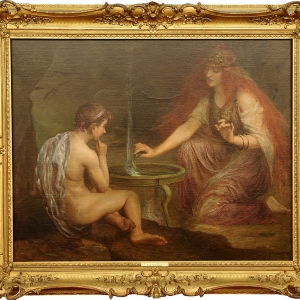
- Teenage Girl with a Straw Hat

- Playing with a Caged Bird
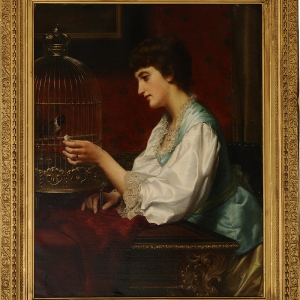
- Portrait of a French Woman
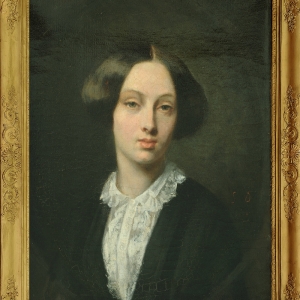
- Snow Scene at Dusk
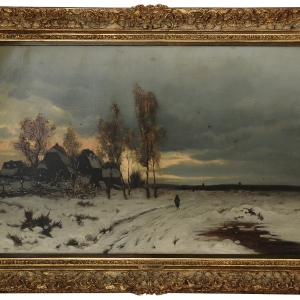
- Childhood Intimacy
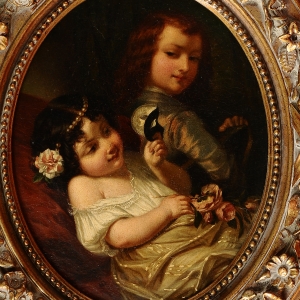
- Path in the Woods
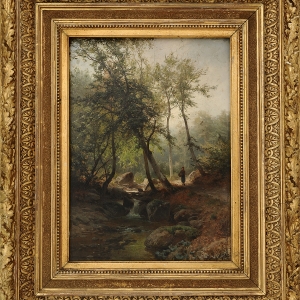
- Vagrant Fiddler
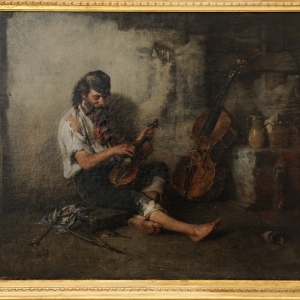
- Old Man Absorbed in Reading
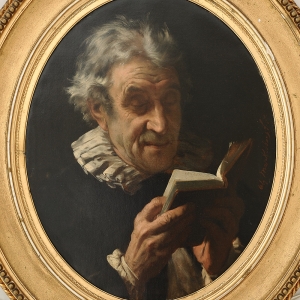
- Girl at Pray
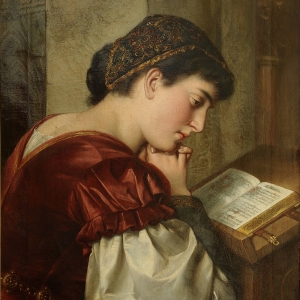
- Hunting in the Forest
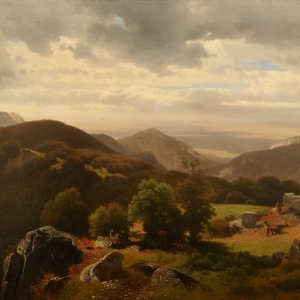
- Forest in Early Spring查看更多
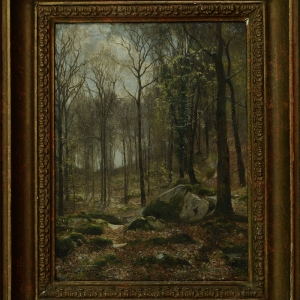
参观指南
Organizers: The Hunan Musuem, the Vienna Art Salon in Austria, See-Yon Exquisites
Time: June 6, 2015—June 28, 2015
Venue: Hunan Tan Guobin Contemporary Art Museum, Changsha, Hunan

展览介绍
食洋而化 风神独韵——关良一百一十五周年诞辰特展
提起关良,浮现在众人眼前的都是一幅幅小巧可人、充满童趣、率真的戏曲人物画。这既是关良的独特标识,又是迥然于他人的风格特色。本次画展便展出了“孙悟空三打白骨精”、“贵妃醉酒”、“京戏人物组图”等极具中国特色的画作,吸引了大到七旬老人,小至几岁孩童的参观。
作为20世纪最具变革、创造精神的画家之一,关良在中国画的拓展与传承方面做出了卓越的贡献。他将中西方画法完美融合,将西方现当代派艺术家马蒂斯、凡•高、高更的画法融化,参以中国绘画中浓淡干湿的墨色,简练的线条,独有的中国美学精神,形成了个人绘画的特色。
他的作品用笔简练,质朴平易,极富笔趣,不拘泥对象的解剖、透视和比例,而是以夸张、变形的手法传神写照,人物情态天真而幽默,尤其是眼神刻画最见功力,眼睛瞳孔以浓墨点醒的绘画方式极具传神。

展品欣赏
艺术家介绍

关良(1900-1986),号良公,广东番禺人。1917年留学日本,先后入川端研究所、太平洋美术学校学习,在日本期间潜心研究学习欧洲现当代艺术家莫奈、马奈、梵高、马蒂斯、毕加索的作品,回国后,于上海美术专科学校、上海艺术大学、杭州国立艺术专科学校任教。建国后,先后担任中国美术家协会理事、上海美术家协会副主席、上海文史馆馆员,上海中国画院画师,浙江美术学院教授、上海交通大学艺术研究室主任兼顾问及上海文联委员会等职。关良与早期第一批留学国外的艺术家一样,以西画入手,将高更、凡•高、马蒂斯的艺术中夸张的造型,平涂的大面积对比色,简练的线条融入自己的作品中,在早期的作品中留下了鲜明的时代特色。回国后在吴昌硕、齐白石、黄宾虹、刘海粟、潘天寿的影响下开始学习中国画,并上溯八大山人,最终形成了以中国艺术精神为旨归,融合中西技艺的独特的风格特色,开启一个绘画表现的新时代。正如程十发所言:关良先生是中国近现代画坛上一位不可或缺的大师,也是他最早将西方现代派的绘画理念引入中国的水墨之中,创造了别具一格的戏剧人物画。

展览介绍
大师之外的大师——19世纪欧洲古典写实油画展
回望西方艺术史,欧洲古典写实油画作为其最重要的一个部分,从古希腊时期发展到文艺复兴时期,再到19世纪工业革命时期,无论是技艺、作品还是理念都达到了巅峰。这一时期,艺术上各种流派不断涌现,拉斐尔前派、新古典主义、浪漫主义、现实主义与巴比松画派等不同流派、风格各异的油画大师以及大师之外的大师们,纷纷展现出杰出的艺术才华,将古典写实油画艺术推向极致。
展览分为“肖像与风俗”和“风景与静物”两大部分,共展出80多幅欧洲古典写实油画精品。这些作品都是写实的,画面均为真实的场景,质感逼真,细节刻画十分精致。同时,这些作品几乎囊括了当时几个最重要的流派:拉斐尔前派所弥漫的文学情怀与叙事感,德国浪漫主义的神秘与幽深,法国新古典主义的端庄与雅致,以及现实主义对自然与劳动的歌颂和巴比松画派的现场写生感。

展品欣赏
- 爱情毒药

- 戴草帽的花季少女

- 逗趣笼中鸟

- 法国女人肖像

- 黄昏雪景

- 两小无猜

- 林中小径

- 流浪的提琴手

- 凝神阅读的老人

- 祈祷女

- 森林狩猎

- 森林早春查看更多

参观指南
主办单位:湖南省博物馆、维也纳艺术沙龙、西苑雅集
策 展 人:揭湘沅
展览时间:2015年6月6日—6月28日
展览地址:湖南长沙谭国斌当代艺术博物馆
展览介绍
The Dawning East -Collections from the Spring and Autumn and the Warring States Periods
This is an era featured by vitality and dynamism, an era blessed with exquisite craftsmanship and delicate innovation and an era where Chinese civilization and traditional culture took shape. The old institution was abolished while the new order established, revealing the dawning in the east.
240 pieces of precious cultural relics from 30 cultural institutions and museums nationwide are collected for this exhibition to help the visitors get a deeper understanding of the Spring and Autumn and the Warring States Period which was a time of great historic transformations from a grand narrative perspective. The Spring and Autumn and Warring States Period (770 to 221 BC) spanning over 500 years, played a vital role in Chinese history when profound changes and turbulences mixed up with great advances and integration. Despite complicated historic lines during the period, the exhibition, by making painstaking and scrupulous research on the historical records, decided to tell what happened in the east from political, economic and cultural aspects. The period was also called by the famous German scholar Karl Jaspers as the “Axial Age” of human civilization.
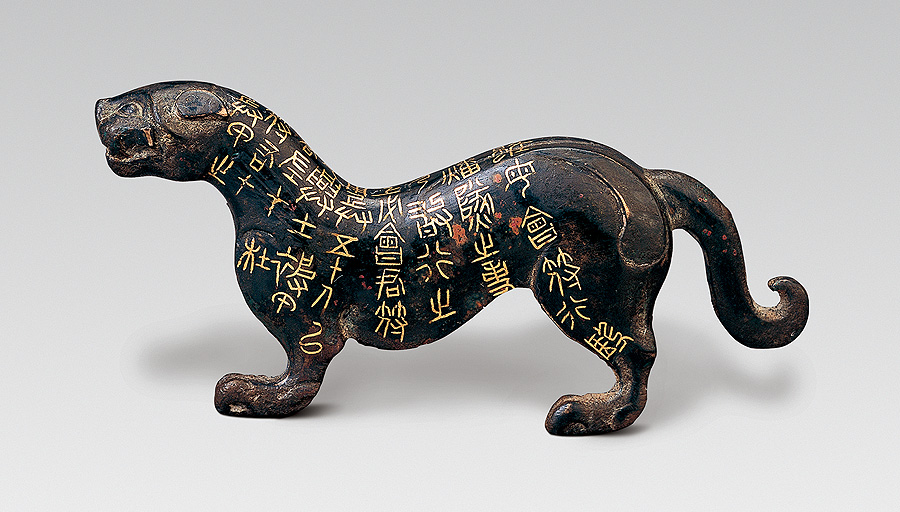
展品欣赏
参观指南
Exhibition Period: From 29th December, 2017 to 28th March, 2018
Tickets: For Adults, 30 Yuan per person
For students, 15 Yuan per person
Open hours: From Tuesday to Sunday, 9:00—17:00 (last entry at 16:00); the museum is closed on Mondays (except statutory holidays) and on Chinese Lunar New Year’s Eve.
Exhibition Venue: No.2 Special Exhibition Hall, 1st Floor, the Hunan Museum
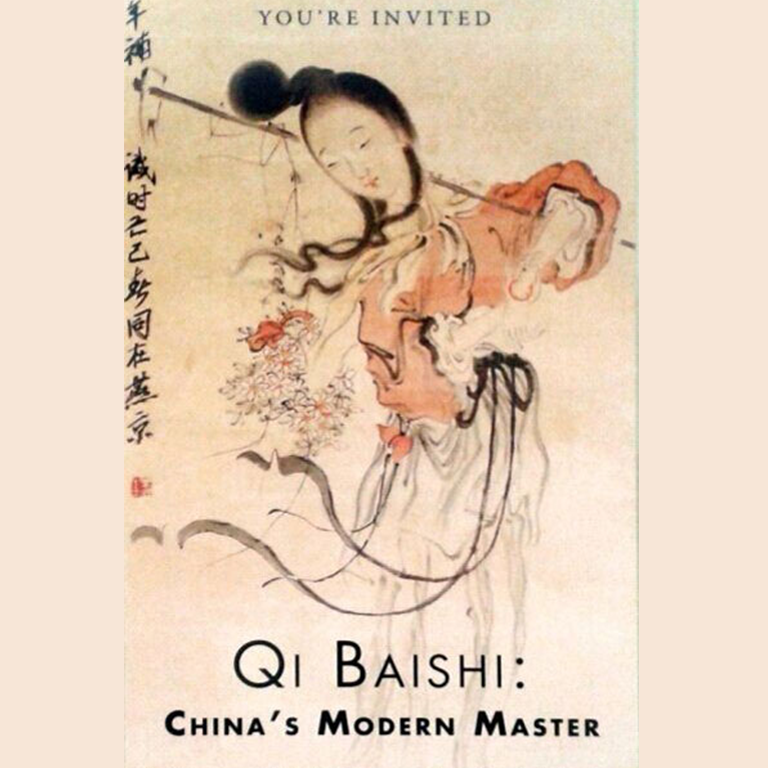
展览介绍
Qi Baishi:Modern Master of China
Organizers:The Bowers Museum, California , the United States
The Hunan Museum, China
Time: April 11, 2015 — July11, 2015
Venue:The Bowers Museum, California, the United States
Jointly held by the Hunan Museum and the Bowers Museum,the exhibition- Qi Baishi:Modern Master of China was opened in the Bowers Museum, California on April 11, 2015 and closed on July11, 2015, which was the debut of Qi Baishi’s works in the United States.
After careful selection, 50 pieces (sets) of works of Qi Baishi were on display, which feature 42 ink and wash paintings from different periods ( the themes varying from figures, landscape to flowers and birds ) , 5 pieces of calligraphy works, 2 seals as well as 1 set of traditional wood doors with carving designs. Besides, The painting-Daiyu Burying the Flowers (the story comes from A Dream of Red Mansions, one of four Chinese classical literary masterpieces) was selected for the exhibition brochures and posters, intending to narrow the cultural distance between China and the United States and attract more locals.
As a master of Chinese traditional art, Qi Baishi reached exceptionally high level in Chinese wash painting, calligraphy, seal and poetry, distinguishing himself with endless ingenuity and creativity. His works, combining traditional culture with modern innovation, are indiscriminately admired by people around the world. The exhibition held in the United States present local people a grand cultural feast of Chinese contemporary art and promotes the exchanges between museums in China and the United States.
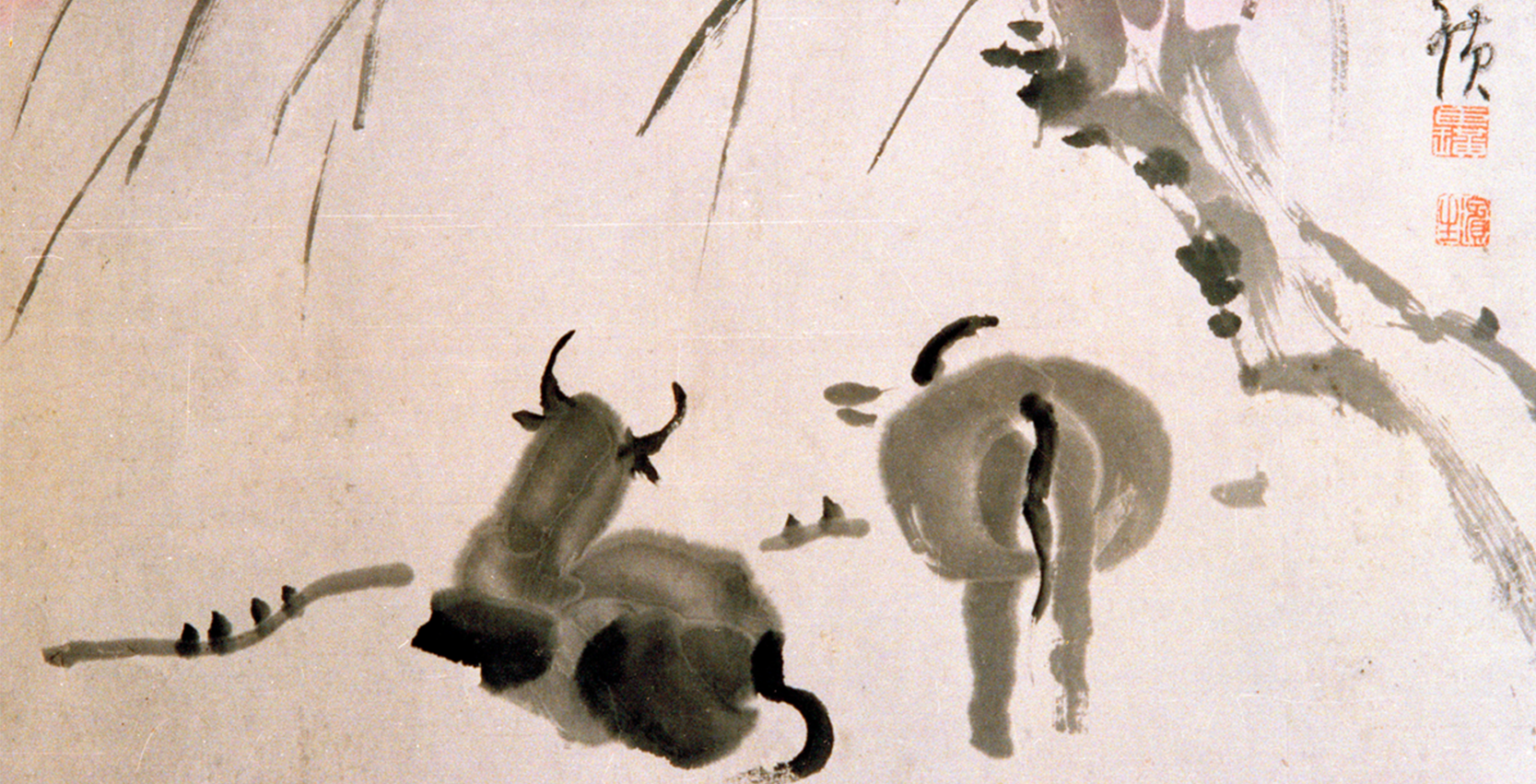
展品欣赏
-
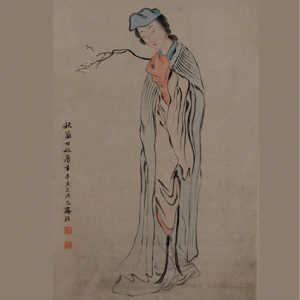
-
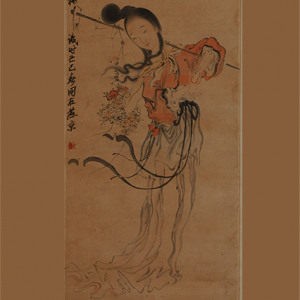
-
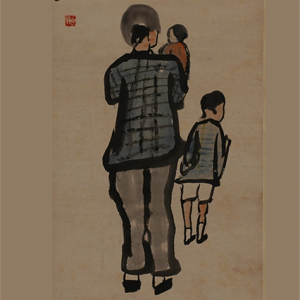
-

-

-
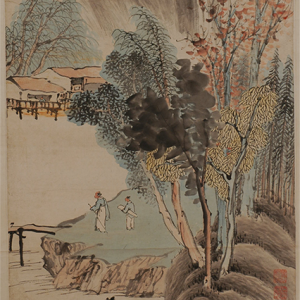
-
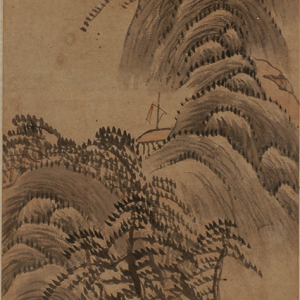
-
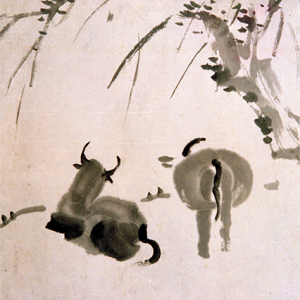
-

-

-
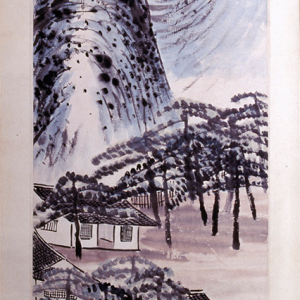
- 齐白石山水图轴查看更多

艺术家介绍
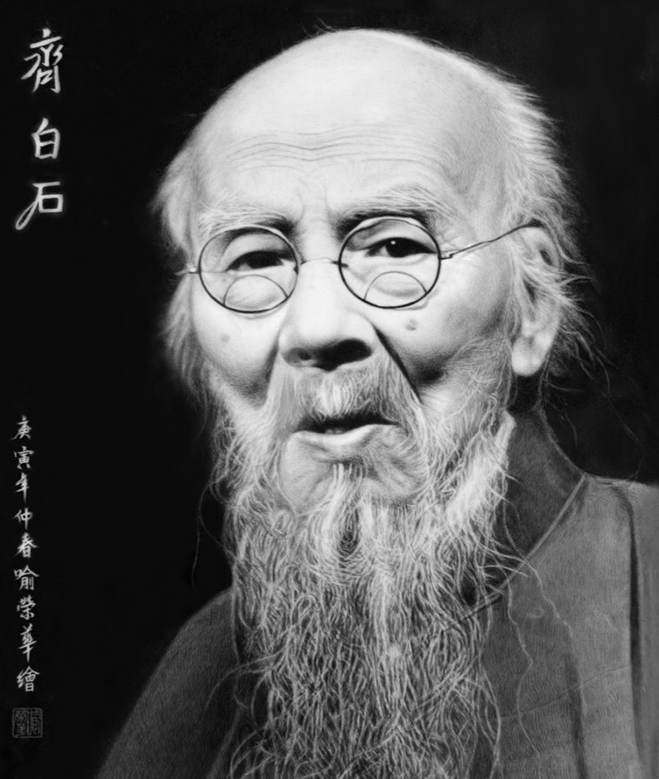
Qi Baishi
(January 1st,1864—September 16th,1957)
A great artist of modern China , established a world-level reputation with his excellent achievements in art. His ancestral home in Dangshan County, Suzhou City, Anhui Province and he was born in Xiangtan City, Hunan Province. His original name was Chun Zhi ( later changed into Huang), courtesy name Wei Qing (later Bin Sheng), pseudonym Lan Ting (which later underwent many changes such as Bai Shi, Bai Shi Shan Weng and Lao Ping ).
Qi was a carpenter in his early years and later earned his living by selling paintings. At the age of 57, he settled down in Beijing. Skillful at painting flowers, birds, insects, fish, landscapes and figures, he impressed the world with images that were remarkably lifelike. Featuring with solidness, smoothness, bright colors and vivid images, his works always lead people into a realm, which is simple in form yet profound in meaning.
For his calligraphy works, Qi excelled in Zhuan and Li (a Script of Seal and Clerical). whose strokes he learnt by studying characters of stone tablet in Qin and Han Dynasty. Besides, he was also well known for primitive cursive handwriting, unique seal as well as ingenious poetry. He was once an honorary professor in the Central Academy of Fine Arts and chairman of Chinese Artists Association etc, with representative works such as Frog Singing Songs, An Ink Painting of Shrimps and Poems of Baishi, Autobiography of Baishi.
The unique style, simplicity and profoundness contained in Qi’s works is a mirror of his unsophisticated and romantic soul, which in turn enhances the appeal of his art.



